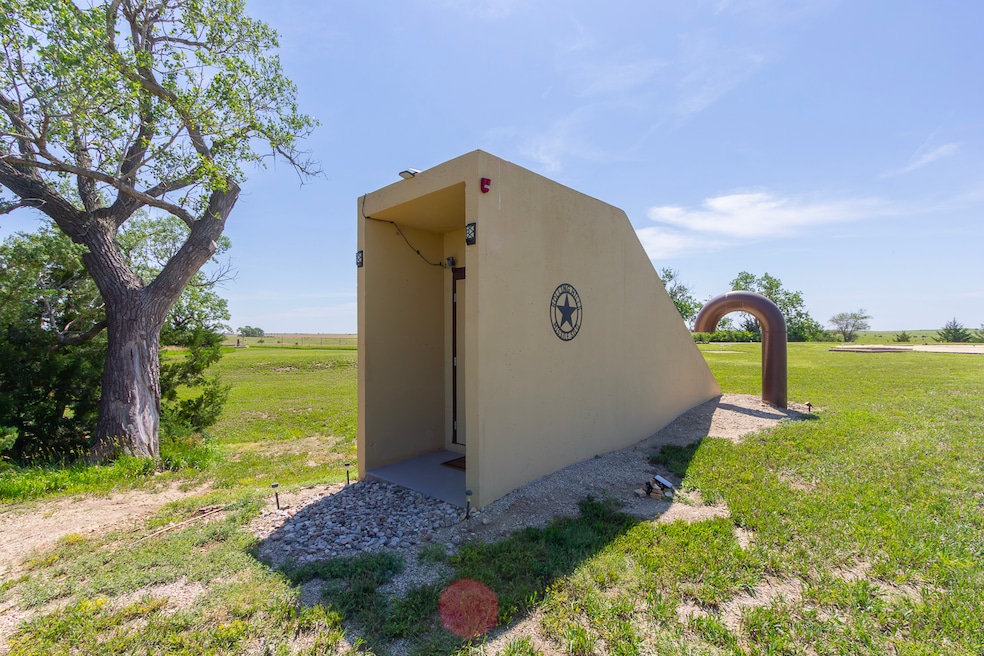Outside Lincoln, Kansas, a roughly quarter-mile driveway cuts through an open field and ends in a door with no building. The freestanding portal opens onto a staircase that leads visitors back to a time when U.S.-Soviet Union policy seemed headed for mutually assured destruction.
This is the Rolling Hills Missile Silo, and it can be yours for $1.3 million.

The underground facility was built in 1960 to house (and, should the worst happen, to launch) a nuclear-equipped Atlas intercontinental ballistic missile, or ICBM.
“They were placed [in Kansas] because they were in range of their targets,” said John Gilbert, a consultant with the Washington-based Center for Arms Control and Non-Proliferation. With an approximate range of 8,700 miles, Atlas missiles in Kansas were largely pointed north, over the Arctic, toward what was then the U.S.S.R.
Gilbert, a former crew commander at other nuclear operations in the Midwest, said a base like this would have had roughly a dozen people maintaining the facility 24 hours a day and making sure a launch could happen at a moment’s notice. “Atlas and the Titan 1 were very maintenance-intensive,” he said.
Ominous signs remain

The Atlas ICBMs were taken off alert status in 1964 and 1965, according to the Association of Air Force Missileers, so the base has been decommissioned for decades. But signs of the location’s clandestine and ominous purpose remain.
“It’s completely secured in by the fences with the barbed wire. And those are all the original fences,” said Terra Martin of Real Broker, who is handling the sale.
Two metal storage buildings and two concrete pads, 100-by-40-feet apiece, sit aboveground on the 8.4-acre property. Gilbert said the pads are where the rockets would have been stored. Atlas rockets could not stand in the silo until they were fueled for launch.
“The missiles were kept in what some people called coffins,” Gilbert said. “They were stored horizontally.”
A circular concrete pad, 52 feet in diameter and 9 feet thick, formed the launch doors that would have dropped open had the Cold War ever turned hot.
Visitors would use the less dramatic entrance: the stairs.

Welcome to the 'entrapment room'
“You can instantly feel the temperature change within five or 10 steps,” Martin said. She said the temperature inside the facility is kept between 54 degrees and 62 degrees Fahrenheit year-round, just by the natural insulation of the ground.
The first room one comes to, which Martin calls an “entrapment room,” is presaged by a 75-ton steel door.


“You’d go through one of those big metal doors,” Martin said. “You close it behind you, and you’re in this tiny room. You pick up a phone, and if you are who you say you are, they’ll open the next door. If you’re not, they’ll trap you in there.”
Today, those doors aren’t functional; they’re sitting open, according to Martin. But they could be put in working order. “It would just be a lot of money,” she said.

After that, one enters the two-story, 2,500-square-foot control center. Its rooms are largely open spaces with railings, structures and pipes, all hinting at the facility's specific engineering. The walls sport a fresh coat of white paint, courtesy of the owner who bought the property three years ago. (Pricing records were not available from the county.)
They’re the kind of rooms that look like sets in a James Bond movie starring Sean Connery.
A tunnel off the bottom floor opens into the silo, an 18-story concrete tube in the earth. Looking down into it, you see a 14-story drop. Above, it is four stories up to the concrete doors.



It could be home, an attraction, or both
The property is zoned residential and has a water well, so Martin says the buyer could simply build a livable house on it and keep the silo for a different purpose, such as a mushroom farm or an art gallery.
Gilbert has trouble imagining someone wanting to live in one of these facilities. “I spent many, many hours in a … control center,” he said. “It’s noisy. It smells. The air is heavy.”
But it has been done. In Concordia, Kansas, sits Larry Hall Jr.’s Survival Condo, a 15-story luxury bunker built into another silo, each floor advertised for $3 million.
Closer to Rolling Hills is the Atlas Ad Astra Adventure Resort, which turned another Atlas silo into an educational center and short-term rental property.
Gilbert thinks the property would be well suited for something such as an enormous wine cellar. “You would really have to worry about humidity and air flow just for human comfort,” he said.
